Forty Women Pulling at The Threads of Social Discourse : is a collaboration between The Contemporary Art Modern Project (The Camp Gallery ) and (FAMA) Fiber Artists-Miami Association. The exhibition commemorates American women winning the vote and revolves around women and their social voices. This was first launched in 2019, exploring how women artists utilizing textiles as their medium subvert the social expectation of crafting, and instead take this soft medium and lambast it with political and social awareness.
More and more, we see women taking to the streets, whether mourning or screaming for a government to account for their lost children, or as they did, one hundred years ago to insist on social and political equality to be able to cast their own vote. The marriage of the female artist to the textile medium, both, outwardly and socially expected to be weak – are in fact, in the hands of these artists – affirms that strength lies in durability, pliability and resolve.
This exhibition also launches the newly formed FAMA, a fiber artist organization based in Miami, Florida. During the pandemic, artists Aurora Molina, Evelyn Politzer, and Alina Rodriguez united a group of creatives to organize and present their first exhibition honouring the 2020 Women’s Vote Centennial and create awareness about the duty to vote. Works have been assembled using mixed media to ignite positive social change. The exhibited works includes an array of flags, as the flag or banner is used as a metaphor or symbol of solidarity with the women of the suffrage movement in this exhibition.
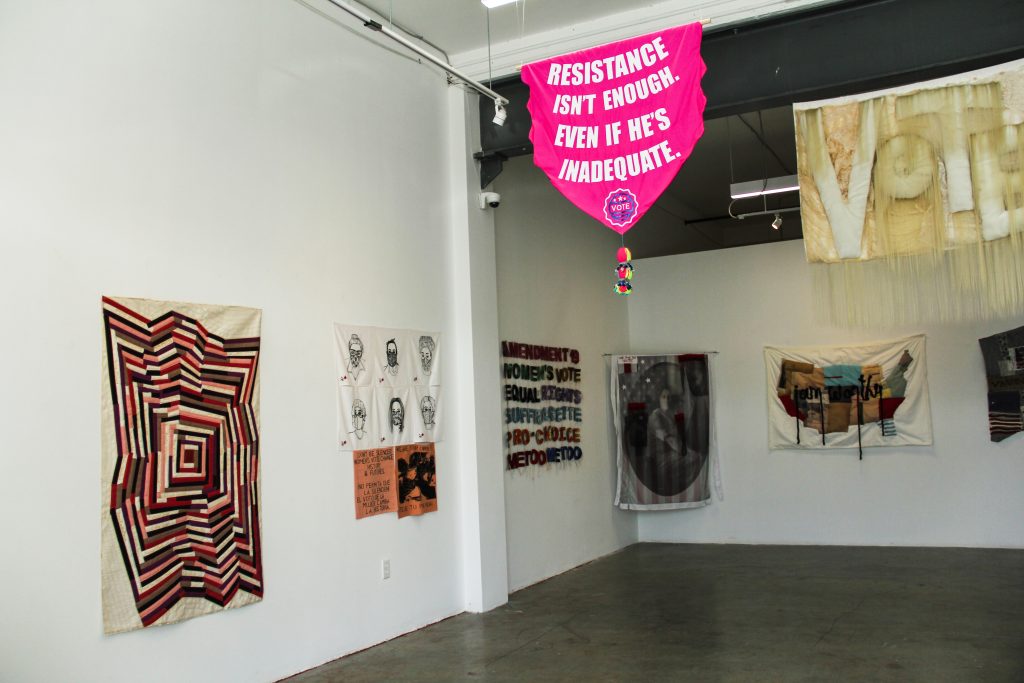
The timeliness of this exhibition is not lost in the obvious, but becomes another rung in the continual search for equality, begun with the women’s right to vote, carried on through feminism and its theories, its internal struggles of inequality by race and class to be united in this exhibition. The exhibition, focusing on ‘the feminist lens,’ which seeks to be distanced from the language of the patriarchy towards a more gynocentric form of expression and placement in the canon of language, takes the subject of voting, burdens it with real experience, with lived and documented and translates the action of voting into the price paid by women in their struggle for the fundamental right of equality.
Artists such as siblings Damian and Alina Rojo, who jointly create Justice Bell, a work that “spans several genres…” is based on the Suffrage Movement and its message still rings true in the ever spiralling distances in ideas of what is equality. Aurora Molina, ever a voice pointing out inequalities continually clogging false realities of all is well in the world is immortalized in her piece: I Go to Prepare a Place for You, looks back in time at founding women in the movement, such as: Elizabeth Cady, Susan B. Anthony, Harriet Tubman and Marie Louise Baldwin and how their fight from different frontiers due to race, (showing of the divide referenced earlier) and how their sacrifices have placed us today closer to
the ideal of equality.
The piece from Amy Gelb, depicts her great grandmother, the first woman in her own family to vote, thus rendering the work not just a flag but a testimony to history and experience. Shelly McCoy assaults the viewer with a rendition of the stars and stripes that is unexpected; stars have been replaced by penises and the stripes are bras. The interesting suggestion of the bras as stripes, likens them to bars, thus implying that because of gender there is a notion on ‘being behind bars,’ and thus, disenfranchised. Alissa Alfonso creates a flag from paper stating that “Earth Can’t Vote” drawing attention to the vulnerability of our planet and how important this year’s vote will be for the future of the planet.
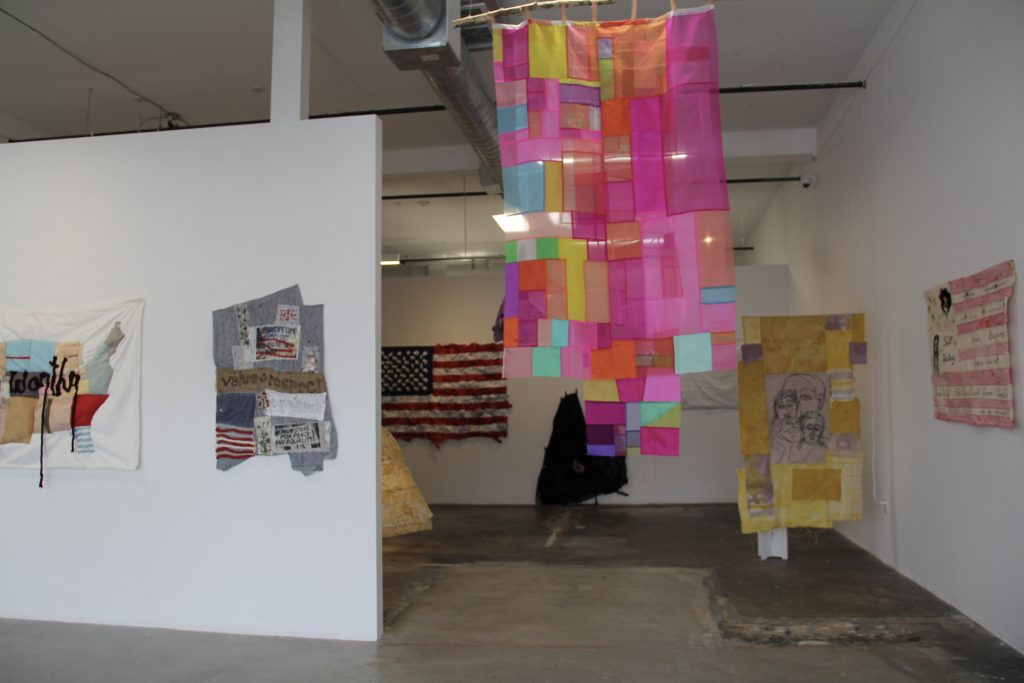
Carola Bravo, through her use of video projected on textiles and the notion of a virtual reality on a continuum, in her work brings us back to the school room and rewriting, over and over again until learned that the vote is the right of all Americans.
Artist Evelyn Politzer focuses on the connections and interdependence of society in her flag of strings showing that we all are connected, whether we know it or not and that the only path is one mutual equality. Jaffe McGreevy projects, made up of Jeanne Jaffe and Molly McGreevy presents a flag full of dualities, both teetering on the lines of aspects of a woman’s life ascribed by society and its expectations. The Assemblage flag by Karla Kantorovich: Time after Time, heralds that we have always succeeded when we come together and are united arguing that the only thing that matters is unity.
Laetitia Adam – Rabel, in Red, White and Pink: The Color of Politics,speaks of the divide still in feminism when it comes to women of colour that where the white woman enjoys a closer sense of equality with the man, the women of color are “still waiting” as her flag states. CAMP artist Laura Marsh, known already for her flags and banners, in her work calls us to remember why woman fought for the vote and that we met vote, and not just be totems of resistance – action brings results and that action is the act of voting. Laura Villarreal, picks up her needle and thread and quilts a map of The United States, but because of the different fabrics we are left with the realization that we are not really all that united bringing to mind : United we Stand, Divided, we fall.”
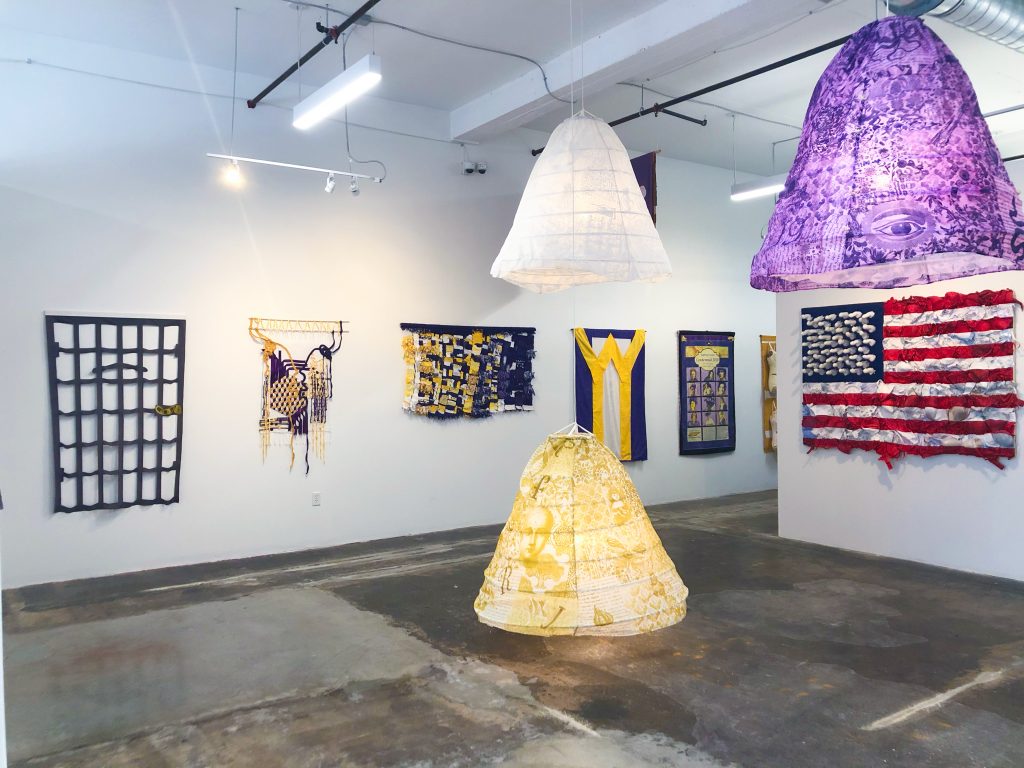
Liene Bosque, reminds the viewer of the price paid by women in the struggle for the vote and how that fight and protest led many to be behind bars, something we have often seen when a body of people come together for equality with the patriarchal order, their first reward is not equality, but a jail cell. Remembering this truth, and works like Bosque’s scream that it is not enough to have the right only, it must be used. Lisu Vega’s Los Caminiantes, bemoans the struggle of peoples living in a repressed
society and what the reality often is when they flee in hopes of a better future, instead of that hope, her work confronts our comfort as we are face to face with a mother and a wailing child. The power of the work does lie in the child, but also the expression of the nameless mother who looks out at us – both valiant and defeated.
Maru Ulivi, in her mixed media flag: Callar Duele Mas, hones in how some avoid the struggles and realities facing those oppressed and forces the realization that turning a blind eye, does not stop suffering. Taking a traditional practice of textile arts, Mary Ruden creates a sampler honoring the women of the Suffragist movement, using shades and tones of purple thereby elevating these women to the realm of royalty, and thus worthy of honor. Amendment 19, by Nancy Billings, a hand dyed work of velvet questioning why it is still uncomfortable and difficult for many in the patriarchy accept the equality inherent in all people.
Referencing the actual movement and experience of the Suffragist movement, Pip Brant quotes Inez Milholland and a poem she wrote from her first march: “Forward through the darkness/ Forward out of terror/ Leave behind the night/ Forward into light,” imagining the fear these early feminists experienced yet never faltered renders them among the most courageous, even though they are ‘just’ women. Regina Jestrow in Suffrage Quilt utilizes a traditional practice and emblazon it with meaning; the pattern of a log cabin, the colors used all to position the layers of years that women have been striving not only for the vote, but equal representation.
Questioning what it means “We, the People,” artist Silvana Soriano quilts her version of We, The People, identifying who exactly are the people and their varied cultures and identities that make up the country we call the United States, and how that history and the souls of the folk have built and died for what we have today. Women of Essence, by Sunny Marquez traces the history of the fight for the vote by incorporating symbols that identify the strength of the woman. Going underneath the armor of a woman, Valeria Montag creates flags from garments initially associated with restraint, today often seen as garments of seduction arguing how the definitions affixed to the woman, either control or objectify her. My Body is a Fiesta by Yolanda Sanchez presents a myriad of colors and shapes in transparent fabric, suggesting that both the women seeking equality and their goals are to be celebrated, and once again they will be achieved through unity.
On September 19, 2020, we mourned the passing of Justice Ruth Bader Ginsburg, this exhibition and its message – the right to vote, and the action and responsibility of everyone voting is ever more important. The voices of these artists, and women such as Bader Ginsburg, fighting the ‘good fight’ are the foundation from which we can all aspire, are the present day warriors still carrying the torch first lit over one hundred years ago.
Melanie Prapopoulos © 2020
Threads of Social Discourse – FAMA and Guests, will be held at: 350 NE 75th St
Space 109 Miami, FL 33138. On view from October 1- October 25, 2020. The opening
reception will take place on October 3, 2020 at 6:00 pm with a live virtual tour.
Artists: Aurora Molina, Alina Rodriguez-Rojo Damian Rojo, Alissa Alfonso, Amy Gelb,
Angela Bolaños, Carola Bravo, Cassandra Bozman, Colette Mello, Debora Rosental,
Evelyn Politzer, Erica Poy, Harvest Project, Jeanne Jaffe, Molly McGreevy, Karla
Kantorovich, Karla Mogna, Laetitia Adam-Rabel, Laura Marsh, Laura Villarreal, Liene
Bosquê, Lisu Vega, Maria Lino, Maru Ulivi, Marlene Kohn, Mary Ruden, Nancy
Billings, Nancy Mastronarvdi, Pip Brant, Regina Jestrow, Rosario Salazar, Shelly
McCoy, Silvana Soriano, Silvia Yapur, Sonia Baez- Hernandez, Sunny Marquez, Susan
Feliciano, Tom Virgin, Patti Virgin, Valeria Montag, and Yolanda Sanchez

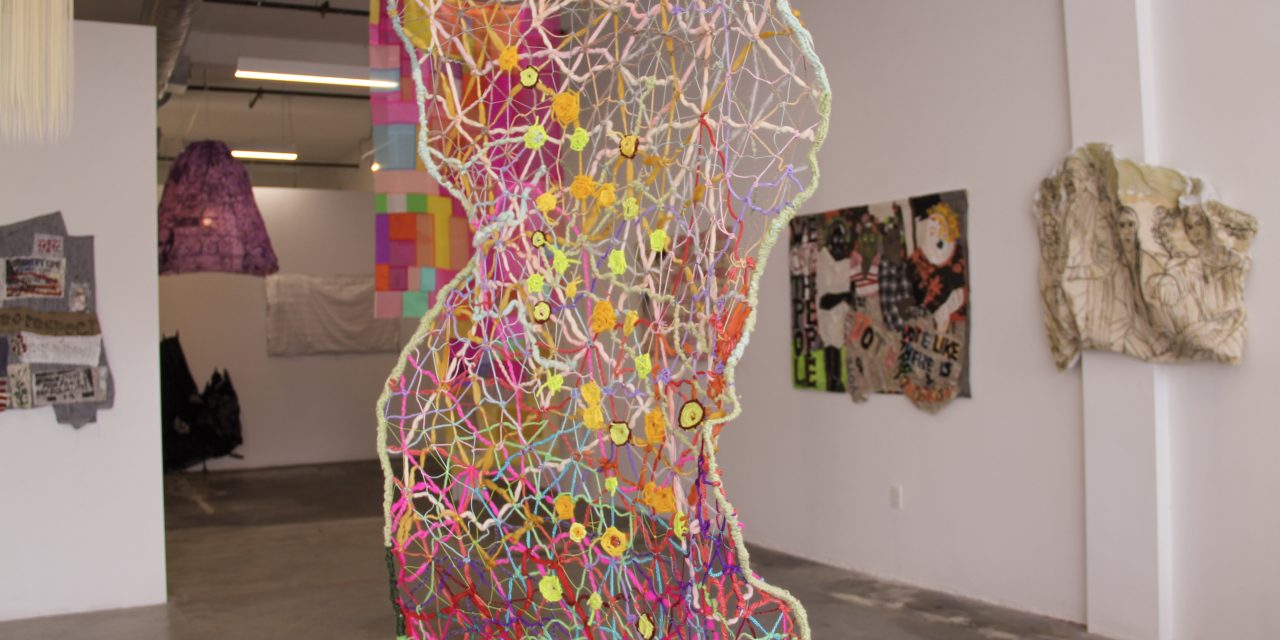
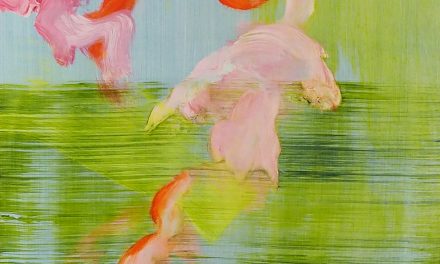

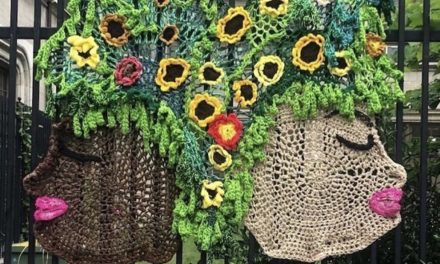
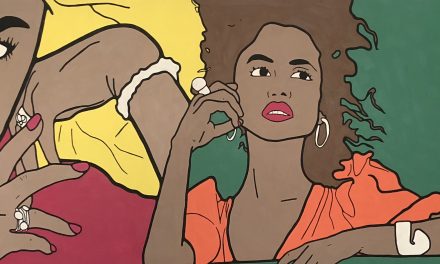
Recent Comments